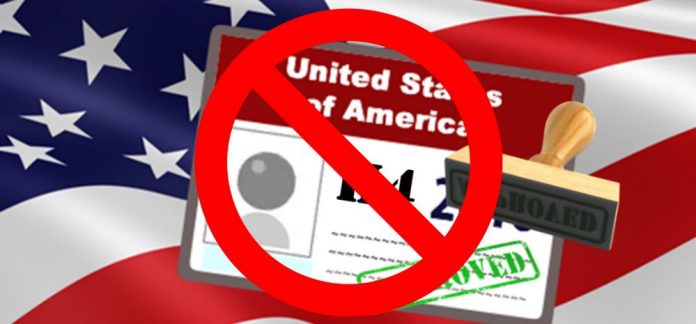After temporary suspension of skilled non-immigrant visas such as H-1B, US administration’s ‘2020 Spring Agenda’ suggests there are more changes being planned.
The worst is probably not over for H-1B visa holders, according to recent reports that indicate of possible changes to the United States’ visa regime. This may not bode well for Indians living in the US and for their ‘American dream’.
After temporary suspension of skilled non-immigrant visas such as H-1B, which are preferred by Indian companies and techies, the 2020 Spring Agenda released by the US administration now suggests that there are more changes afoot for H-1B and other visas such as H4 EAD, F-1 (student visa) and Optional Practical Training (OPT).
This is to protect American jobs and strengthen the H-1B programme, remove H4 EAD and ensure that OPT is not abused.
What exactly are these changes?
H-1B
According to reports, the Department of Homeland Security has proposed revising the definition of H-1B to get only the best talent to the US. This would mean that the definition of employer-employee relationship will be revised and wage hikes could be made mandatory for H-1B visa holders to ensure they are indeed highly skilled.
Its impact remains unclear. However, going by track record of US agencies, it could result in more rejections and undermine the recent judgement that ruled in favour of the H-1B employers.
The USCIS policy, which the judgement overturned, started in 2010 through a memo introduced by the agency. This memo gave USCIS the authority to deny H-1B petitions based on an “employer-employee” relationship, including when an H-1B visa holder performed work at a customer’s location, according to a report by Forbes.
This change in definition proposed by the DHS could potentially translate into tedious visa processes, which employers want to avoid.
Since 2017, the Indian IT firms have reduced their visa dependency in the US by 40-60 percent and have moved their work offshore. Yet, Indians continue to be the largest H-1B community accounting for about 70 percent of the total H-1B visa holders in the country. Of the 85,000 visas issued per year, Indians account for a lion’s share of over 60 percent.
H4 EAD (Employee Authorisation Document)
In 2015, the Obama administration allowed employment of dependent spouses in the US through H4 EAD. Removal of H4 EAD, which allows spouses of H-1B visa holders to work in the US, has been in the works since Trump administration took over.
Its impact? According to Redbus2US.com, given the unemployment rate in the US, this could be a priority for the US government. Unlike H-1B, employers can hire H4 EAD workers for lower wages and hence they are attractive for some companies. Reports peg the number of H4 visa holders in the US to be more than 70,000.
F-1 (student visa)
The US Immigration and Customs Enforcement (ICE) has proposed to establish a fixed period of time for admission and extension of stay for students. Currently, those with an F-1 visa do not have an end date and can stay in the country as long as they have the eligible status granted by the US government for F-1 holders.
Though it will not impact students right now, these changes could have an impact on how long students stay within US after graduation or OPT. There are about 2.5 lakh Indian students in the US.
OPT
The US ICE will amend and revise practical training options given to student visa holders through with increased supervision and compliance. This is an attempt to address the abuse of OPT programme by student visa holders.
This could bring in extra oversight rules that would make it difficult for the OPT programme to be misused. According to Redbus2US.com, this will involve additional cost for schools to ensure compliance is in place and there is more supervision to avoid fraud.
Why is it under review? The current regime offers three years OPT for science, technology, engineering and mathematics graduates, either during or after completion of their studies. For most students, OPT is a ticket to getting H-1B visa. Indians are one of the biggest beneficiaries along with Chinese students. There are about 2.5 lakh Indian graduates in the US. According to a report by Breitbart, close to 70,000 Indian graduates got work permits for OPT jobs in 2018.


